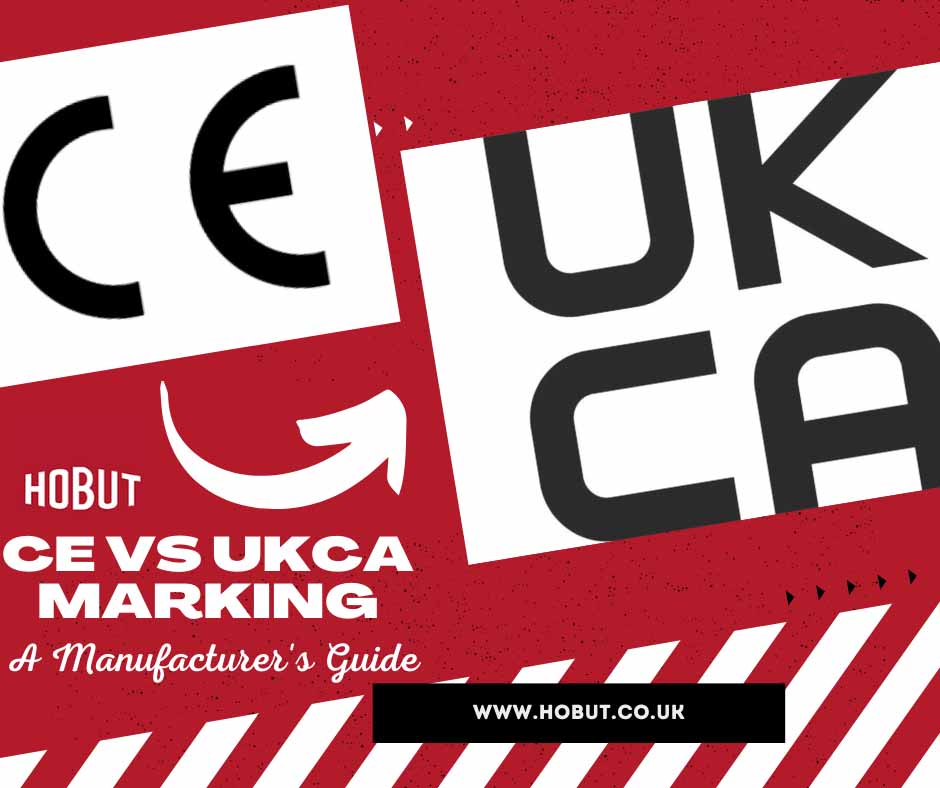What is CE Marking?
CE Marking is a declaration that the manufacturer has checked that its products meet EU product safety standards and that they are compliant with health and environmental standards. This allows for free movement of those products throughout the EU.
A manufacturer can obtain a CE mark either through a self-declaration or, where required by specific legislation, through a third–party conformity assessment body.
What products needs to be CE Marked?
CE marks are not required for every product. For instance, they are not needed for chemicals, pharmaceuticals, cosmetics and food.They are only required for certain types of products covered by EU harmonisation legislation which include medical devices, machinery, measuring instruments, electrical equipment and toys.
If your products require CE Marking but doesn’t conform to these relevant standards, then you cannot sell them legally in the EEA countries. If your product doesn’t require CE Marking, then it should not carry the CE Mark.
What are the implications for UK Manufacturers?
CE marking does not mean that a product was made in the European Economic Area (EEA), but states that the product is assessed before being placed on the market.
It means the product satisfies the legislative requirements to be sold there.
It also alludes that the manufacturer has checked that the product complies with all relevant essential requirements, for example health and safety requirements.
The process that Manufacturers must follow to place a CE Marking on a product
As a manufacturer it is your responsibility to follow the below process, and first of all to check which of the New Approach Directives apply to your products. There are over 20 directives, and the process depends on which directive applies.
- Identify the directive(s)
- Check the product-specific requirements
- Identify whether an independent conformity assessment is required from a Notified Body
- Test the product and check its conformity
- Draw up and keep the necessary technical documentation – which includes examination certificates, how the product is manufactured, design and manufacture of products etc.
- Placing the CE Marking on your product and EC Declaration of Conformity
What is UKCA Marking and how does it differ from CE Marking

From 1st January 2021, the UKCA mark has started to replace the CE Mark for goods sold from within Great Britain.
There is, however, a transition period and so manufacturers have until 1st January 2022 to conform.
You need to use the new UKCA marking immediately after 1 January 2021*, if all the following apply. Your product:
- is for the market of Great Britain
- is covered by legislation which requires the UKCA marking
- requires mandatory third-party conformity assessment
- conformity assessment has been carried out by a UK conformity assessment body and you haven’t transferred your conformity assessment files from your UK body to an EU recognised body before 1 January 2021
What does UKCA Marking mean for Manufacturers?
It is true that there isn’t much difference to the requirements of CE Marking, however, you will no longer be able to use EN standards to show conformity.
This means that all technical files will need reviewing so that there isn’t any reference to EN in the UK and BS in the EU.
It also means that goods manufactured to EU rules, cannot be assessed by a body based in GB.
*It does not apply to existing stock, for example if your product was fully manufactured, CE marked and ready to place on the market before 1 January 2021. In these cases, your product can still be sold in Great Britain with a CE marking even if covered by a certificate of conformity issued by a UK body before 1 January 2021. These goods will need to have been placed on the market before 31 December 2021.
Manufacturers will need to transfer certificates and authorisations issued by an existing UK-based body or authority to an EU 27-based body or authority if you want to sell into the EU.
The circumstances in which you can use self-declaration of conformity for UKCA marking are the same as for CE marking. If you were able to self-declare conformity for the CE marking, you will be able to do the same for the UKCA marking. There is a list of areas where self-declaration is permitted.
Placing the UKCA marking
In most cases, you must apply the UKCA marking to the product itself or to the packaging. In some cases, it may be placed on the manuals or on other supporting literature. This will vary depending on the specific regulations that apply to the product.
The UKCA marking must be clearly visible and legible when you affix it to the product. If this is not possible, you must attach it to the packaging (if any) or accompanying documents.
UKCA markings must only be placed on a product by you as the manufacturer or your authorised representative (where permitted in the relevant legislation).
When affixing the UKCA marking, you take full responsibility for your product’s conformity with the requirements of the relevant legislation.
You must only use the UKCA marking to demonstrate conformity with the relevant UK legislation.
You must not place any marking or sign that may misconstrue the meaning or form of the UKCA marking to third parties.
You must not attach other markings on the product which affect the visibility, legibility or meaning of the UKCA marking.
The UKCA marking cannot be placed on products unless there is a specific requirement to do so in the legislation.
A product may have additional markings and marks, as long as they:
- fulfil a different function from that of the UKCA marking
- are not likely to cause confusion with the UKCA marking
- do not reduce the legibility and visibility of the UKCA marking
Tags: #ukmanufacturing #CEMarking #UKCAMarking #Hobut #Manufacturersguide
